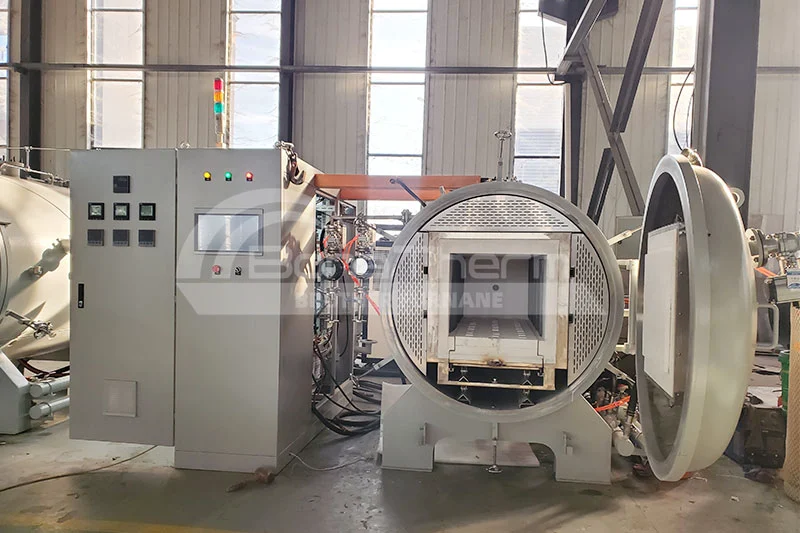Introduction
The vacuum tempering furnace is a specialized heat treatment equipment designed for rapid cooling of metal materials under vacuum conditions. It is suitable for various types of metal materials and components, including high-speed steel, tool steel, titanium alloys, nickel-based alloys, chromium alloys, etc.

Features
- High Automation Level: The system integrates PLC (Programmable Logic Controller) technology, allowing for automated control of temperature parameters. This high level of automation reduces the need for manual intervention, streamlining the heat treatment process.
- Precision Temperature Control: The PLC system offers precise control over temperature parameters, ensuring that the desired temperature levels are maintained consistently throughout the heat treatment process. This accuracy is crucial for achieving desired material properties and product quality.
- Ease of Operation: The system is designed with user-friendly interfaces and intuitive controls, making it easy for operators to set up and monitor temperature settings. This simplicity in operation reduces the risk of errors and enhances overall efficiency.
- Cost Savings: By automating temperature control and optimizing energy usage, the intelligent PLC system helps reduce operating costs associated with heat treatment processes. It minimizes energy waste and improves resource utilization, leading to significant cost savings over time.
- Adaptive Control: The system can adapt to changing process conditions and adjust temperature parameters accordingly in real-time. This adaptive control capability ensures optimal performance and product consistency, even in dynamic operating environments.
- Remote Monitoring and Control: Some PLC systems offer remote monitoring and control capabilities, allowing operators to oversee temperature regulation processes from a distance. This feature enhances operational flexibility and facilitates proactive maintenance and troubleshooting.
- Data Logging and Analysis: The system can record temperature data and other relevant parameters during the heat treatment process. This data logging functionality enables detailed analysis of process performance, facilitating continuous improvement and optimization efforts.


 Get Inquiry
Get Inquiry Send Email
Send Email










